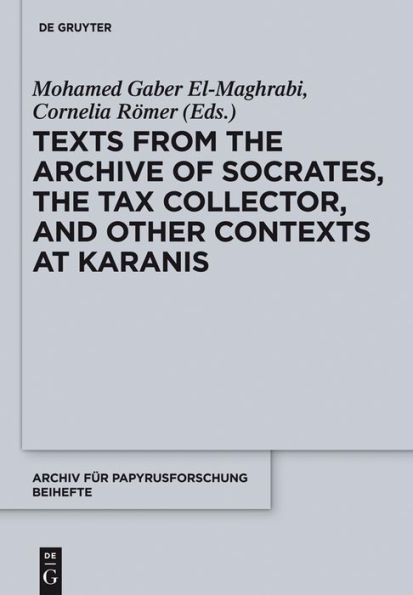Many of the texts published here come from the archive of a well known figure in the village life of Karanis in the 2nd century AD: Socrates, son of Sarapion, was a tax collector here for many years, serving the Roman Empire collecting taxes due in money and in kind. Besides his successful economic activities - Socrates certainly belonged to the upper stratum of society in Karanis - the tax collector was a lover of Greek literature; for sure, he did not venture into high philosophy and the like, but he read Homer, comedies, and tried to be up to date about mythology in plays.
Half of the new texts published here are literary, mostly from Socrates’ library; other texts were found in the immediate neighbourhood of where Socrates lived, such as a surgical treatise about remedies of shoulder dislocations, which perhaps belonged to a doctor. The other half of the papyrus texts in this volume are documents that can shed new light on the activities of the tax collector, or of other inhabitants of Karanis. Altogether they give us a vivid picture of village life in Graeco/Roman Egypt in the 2nd century AD.
Many of the texts published here come from the archive of a well known figure in the village life of Karanis in the 2nd century AD: Socrates, son of Sarapion, was a tax collector here for many years, serving the Roman Empire collecting taxes due in money and in kind. Besides his successful economic activities - Socrates certainly belonged to the upper stratum of society in Karanis - the tax collector was a lover of Greek literature; for sure, he did not venture into high philosophy and the like, but he read Homer, comedies, and tried to be up to date about mythology in plays.
Half of the new texts published here are literary, mostly from Socrates’ library; other texts were found in the immediate neighbourhood of where Socrates lived, such as a surgical treatise about remedies of shoulder dislocations, which perhaps belonged to a doctor. The other half of the papyrus texts in this volume are documents that can shed new light on the activities of the tax collector, or of other inhabitants of Karanis. Altogether they give us a vivid picture of village life in Graeco/Roman Egypt in the 2nd century AD.

Texts from the "Archive" of Socrates, the Tax Collector, and Other Contexts at Karanis: P. Cair. Mich. II
166
Texts from the "Archive" of Socrates, the Tax Collector, and Other Contexts at Karanis: P. Cair. Mich. II
166
Product Details
| ISBN-13: | 9783110342154 |
|---|---|
| Publisher: | De Gruyter |
| Publication date: | 11/26/2014 |
| Series: | Archiv für Papyrusforschung und verwandte Gebiete - Beihefte , #35 |
| Pages: | 166 |
| Product dimensions: | 6.69(w) x 9.45(h) x (d) |
| Age Range: | 18 Years |
